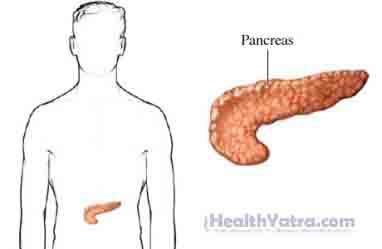Definition
Islet cells are the cells in the pancreas that make insulin. Pancreatic islet cell transplantation is the transfer of islet cells from a donor to another person. The procedure is being studied as a method to treat select patients with chronic uncontrolled type 1 (and some type 2) diabetes.

Reasons for Procedure
Pancreatic islet cells are made up of alpha and beta cells. Type 1 diabetes develops when the beta cells in the pancreas are destroyed. They are destroyed by the body’s own immune system. Without these cells, the body is unable to make insulin. As a result, people with type 1 diabetes need daily insulin injections.
Transplants are most commonly used for persons with recurrent severe hypoglycemia (low blood sugars) and/or who are also receiving kidney transplants. Newly transplanted islet cells can produce insulin. This allow better daily control of the blood sugars with a lower risk of hypoglycemia.
Possible Complications
If you are planning to have a transplant, your doctor will review a list of possible complications, which may include:
- Toxicity from immunosuppressive agents
- Injury to the liver or the pancreas
- Cholesterol problems
- Sensitization—The recipient may form antibodies to future islet cells for repeat transplant.
- Nausea, vomiting, and abdominal pain
- Bleeding
- Infection
- Blood clots
- Worsening of kidney function
- Worsening of high blood pressure
Factors that may increase the risk of complications include:
- Smoking
- Kidney disease
- Bleeding disorders
What to Expect
Prior to Procedure
A review board will determine if you will be eligible for a transplant. Once on the transplant list, one may have to wait months or years for a suitable donor.
Your doctor will order blood tests. A physical exam will be done. These tests will assess the extent and severity of diabetic complications. This includes damage to the kidneys. The donor must also be carefully screened for blood and serum matching.
Anesthesia
Local or general anesthesia may be used. Local will numb the area. You will be asleep with general anesthesia.
Description of Procedure
Pancreas transplant surgery is major surgery and requires special expertise in select medical centers. The cells are delicate and may fail even in the best of circumstances.
Before surgery, islet cells are removed from a donor pancreas. Usually, these cells are used within the next 24 hours.
An incision will be made in the abdomen. A small plastic tube will be placed through the incision and into a major blood vessel of the liver. An ultrasound will be used to locate the right position. Islets cells will be injected through the tube. The cells travel through the vein and attach to the liver. When successful, they will begin making insulin.
Immediately After Procedure
Your blood glucoses may be normal immediately following transplantation.
Your immune system may attack the transferred cells. To prevent this type of attack, called rejection, you will be given medicines to suppress your immune system.
Similar medicines to suppress the immune system are usually needed for the rest of the person’s life to prevent rejection.
How Long Will It Take?
Generally several hours
How Much Will It Hurt?
The area of surgical incision may sting or burn. Anesthesia will prevent pain during the procedure. After the procedure, some patients experience pain or soreness for a few days. If you have discomfort, ask your doctor about pain medicine.
Average Hospital Stay
4-10 days
Post-procedure Care
- Keep the incision wound clean.
- Follow your doctor’s instructions about wound care.
- Check your blood glucose frequently. Follow your doctor’s instructions.
- Closely control blood sugar levels with insulin.
Your doctor may repeat the process several times to transfer more islet cells.
Call Your Doctor
After you leave the hospital, contact your doctor if any of the following occurs:
- Signs of infection, including fever and chills
- Redness, swelling, increasing pain, excessive bleeding, or discharge from the incision site
- Cough, shortness of breath, chest pain, or severe nausea or vomiting
- High or low blood glucose levels
In case of an emergency, call for medical help right away.
